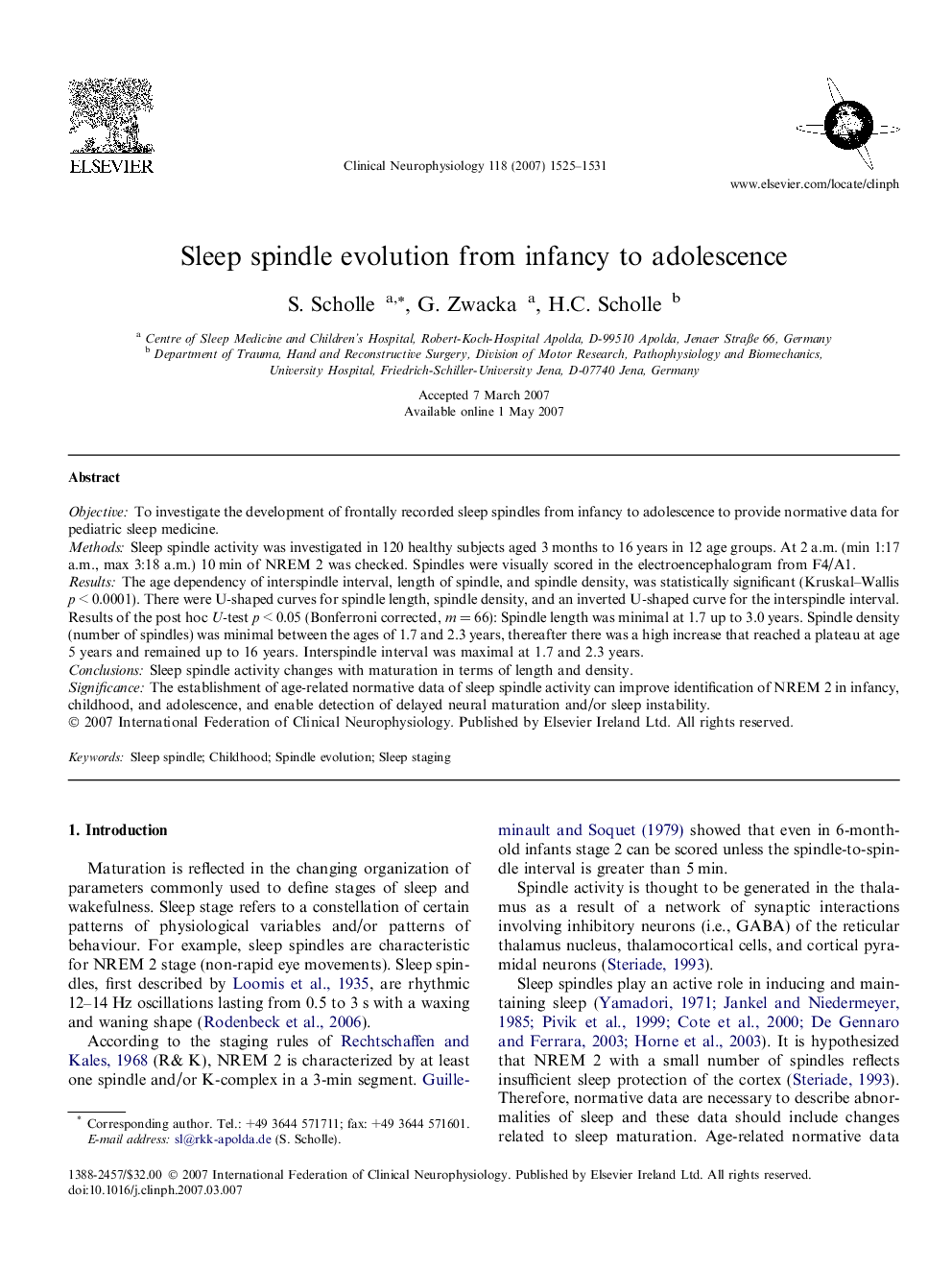| Article ID | Journal | Published Year | Pages | File Type |
|---|---|---|---|---|
| 3047626 | Clinical Neurophysiology | 2007 | 7 Pages |
ObjectiveTo investigate the development of frontally recorded sleep spindles from infancy to adolescence to provide normative data for pediatric sleep medicine.MethodsSleep spindle activity was investigated in 120 healthy subjects aged 3 months to 16 years in 12 age groups. At 2 a.m. (min 1:17 a.m., max 3:18 a.m.) 10 min of NREM 2 was checked. Spindles were visually scored in the electroencephalogram from F4/A1.ResultsThe age dependency of interspindle interval, length of spindle, and spindle density, was statistically significant (Kruskal–Wallis p < 0.0001). There were U-shaped curves for spindle length, spindle density, and an inverted U-shaped curve for the interspindle interval. Results of the post hoc U-test p < 0.05 (Bonferroni corrected, m = 66): Spindle length was minimal at 1.7 up to 3.0 years. Spindle density (number of spindles) was minimal between the ages of 1.7 and 2.3 years, thereafter there was a high increase that reached a plateau at age 5 years and remained up to 16 years. Interspindle interval was maximal at 1.7 and 2.3 years.ConclusionsSleep spindle activity changes with maturation in terms of length and density.SignificanceThe establishment of age-related normative data of sleep spindle activity can improve identification of NREM 2 in infancy, childhood, and adolescence, and enable detection of delayed neural maturation and/or sleep instability.
